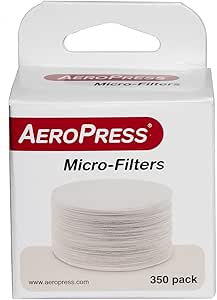Espresso Makers for Latte Art Enthusiasts
Let’s be honest, the heart-stopping thrill of pouring the perfect latte art isn’t just about the taste; it’s about the artistry, the visual symphony of creamy swirls and delicate rosettes. To achieve that flawless design, you need more than just skill; you need the right espresso machine. This isn’t just about pulling a shot; it’s about mastering the microfoam, and the machine plays a vital role.
Why Torque Matters in Your Espresso Machine Quest

Before we dive into specific models, let’s talk about something often overlooked: torque. Now, you might be thinking, “Torque? Isn’t that for trucks?” And you’d be partly right. Torque, in the context of an espresso machine, refers to the rotational force of the motor that drives the pump. A higher torque motor means more consistent pressure during extraction, leading to a more even flow rate. Why is this crucial for latte art? Because a consistent flow rate translates to a more uniform extraction of the espresso, resulting in a rich, creamy crema – the very foundation of stunning latte art.
An inconsistent extraction, caused by low torque or a weaker pump, can lead to channeling (where the water takes the path of least resistance, extracting unevenly), resulting in a bitter, unbalanced shot lacking that luscious crema you need for beautiful latte art. Imagine trying to paint a masterpiece with a brush that sputters and splurts – not exactly ideal. A high-torque motor allows for the consistent pressure needed to prevent channeling and create that perfect, velvety crema texture.
Engine Options: The Heart of Your Espresso Machine

The “engine” of your espresso machine, the component responsible for generating the pressure needed to extract the espresso, typically comes in two main flavors: rotary pumps and vibratory pumps.
Rotary Pumps: The Workhorses of Latte Art

Rotary pumps are generally considered the superior option for serious latte artists. These pumps deliver a consistent, higher pressure (typically 9 bars and above) with minimal noise. Their higher torque ensures a consistent flow rate, critical for a balanced extraction and that desirable rich crema. The higher initial investment is often justified by their longevity and reliability, making them a worthwhile investment for the dedicated latte art enthusiast.
Vibratory Pumps: Budget-Friendly, but With Compromises
Vibratory pumps are the more affordable option, often found in entry-level espresso machines. While they get the job done, they typically offer lower pressure and a less consistent flow rate compared to rotary pumps. This inconsistency can make achieving the perfect microfoam challenging, impacting your ability to create intricate latte art. They’re also often noisier in operation.
Torque and Pressure: The Winning Combination
While torque is crucial, it’s only part of the equation. The machine’s ability to maintain a consistent 9 bars (or higher) of pressure throughout the extraction process is equally important. Some machines might boast high torque, but fail to deliver consistent pressure due to other design limitations. Always check the specifications to ensure that both torque and pressure are adequate for your latte art ambitions.
Comparing Top Espresso Machines for Latte Art

Let’s look at a few popular espresso machines often praised by latte art enthusiasts, comparing their torque and other relevant features (remember, specific torque figures aren’t always readily available from manufacturers):
| Machine | Pump Type | Pressure | Features Relevant to Latte Art | Pros | Cons |
|---|---|---|---|---|---|
| Rocket Appartamento | Rotary | 9 Bars | PID Temperature Control, Durable Build | Consistent extraction, reliable, excellent crema | Higher price point |
| ECM Synchronika | Rotary | 9 Bars | PID Temperature Control, Precise Pressure Control | Precise control, superior build quality, excellent for dialing in shots | High price point, steeper learning curve |
| Breville Barista Express Impress | Vibratory | 15 Bars (peak) | Automatic grinding, pre-infusion | User-friendly, automatic features, good for beginners | Less consistent pressure than rotary pumps |
| Gaggia Classic Pro | Vibratory | 15 Bars (peak) | PID Temperature Control | Reliable, upgradeable, relatively inexpensive | Requires more manual skill, less consistent pressure |
Note: These are just a few examples, and the market is constantly evolving. Always research and compare current models before making a purchase.
Practical Advice for Choosing Your Latte Art Machine
Choosing the right espresso machine is a significant investment. Here’s some practical advice to guide your decision:
- Consider your budget: Rotary pumps offer superior performance but come at a higher price. Vibratory pumps are more budget-friendly but may compromise on consistency.
- Read reviews: Check independent reviews from various sources to get a balanced perspective on a machine’s performance and reliability.
- Look for features that support latte art: PID temperature control, precise pressure gauges, and features like pre-infusion can significantly enhance your latte art capabilities.
- Don’t underestimate the importance of steaming capabilities: A quality steam wand is crucial for producing the velvety microfoam essential for latte art.
- Consider your skill level: Beginners might find a user-friendly automatic machine helpful, while experienced baristas might prefer the manual control of a more advanced machine.
Ultimately, the best espresso machine for latte art is the one that best fits your skill level, budget, and artistic aspirations. By understanding the importance of torque, pump type, and pressure consistency, you can make an informed decision and embark on your journey towards creating breathtaking latte art masterpieces.


